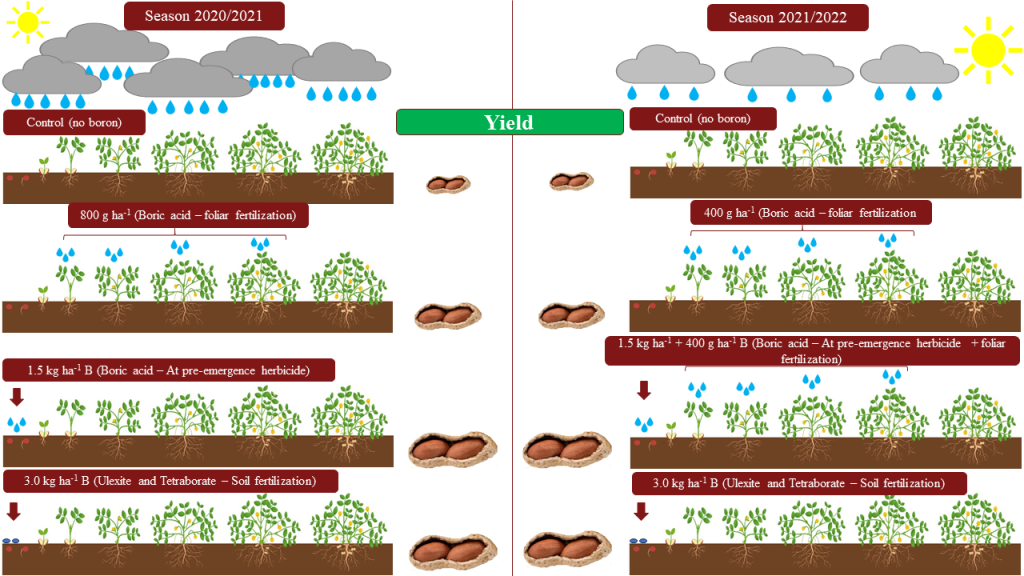Boron nutrition improves peanuts yield and seed quality in a low B sandy soil
25/Mar/2024
ABSTRACT Peanuts are mainly grown in sandy soils with low boron content, which may limit the crop yield, especially runner-type cultivars that have high-yields. Boron deficiency causes hollow heart in peanut seeds, reducing yield and seed quality, but the best strategy to supply boron to peanut is still not known. This study aimed to evaluate peanuts nutrition, yield, and seed quality as a function of boron rate, source, and application form. The study was conducted for two years in sandy […]
Nutrition standards for flooded rice by the methods compositional nutrient diagnosis and mathematical chance
01/Feb/2013
For rice, few studies use foliar analysis methods developed for local conditions of climate, soil or cultivars. The purpose of this study was to evaluate the methods of Compositional Nutrient Diagnosis and of Mathematical Chance to define nutritional standards for rice fields in Rio Grande do Sul state, Brazil. Data of 356 irrigated rice fields for grain yield and foliar contents (N, P, K, Ca, Mg, S, B, Cu, Fe, Mn, Zn, and Mo) were used to calculate the sufficiency […]
Nutritional diagnosis of sugarcane in campos dos Goytacazes (RJ – Brazil)
01/Jun/2002
The present study was conducted to evaluate the nutritional status of sugarcane in Campos dos Goytacazes, Rio de Janeiro, Brazil, by means of sufficiency range and Diagnosis and Recommendation Integrated System (DRIS). Foliar samples were collected in commercial sugarcane fields to evaluate the N, P, K, Ca, Mg, S, Cu, Mn and Zn concentrations. These foliar contents were compared to: (a) sufficiency range described in the literature, (b) average foliar concentration from a high-yielding group cultivated in Campos dos Goytacazes […]
Reference values of macronutrients in eucalypt determined by DRIS and mathematical chance methods
01/Dec/1998
Data from 1.213 trees of Eucalyptus grandis x E. urophylla hybrids were collected between 1988 and 1994 from the Aracruz Celulose S.A. commercial plantation in the State of Espírito Santo, Brazil. Data on stand productivity and macronutrient concentration in four tree components (leaf, branch, stembark and stemwood) were used to determine the reference values of nutrient concentration by the methods of Mathematical Chance and DRIS. The formula of Jones and the population distribution based on age and selection of the […]

